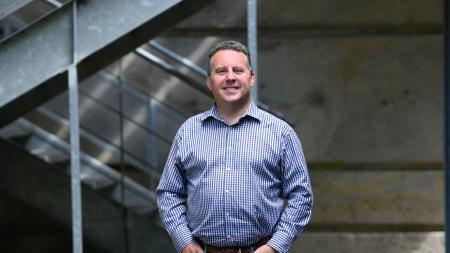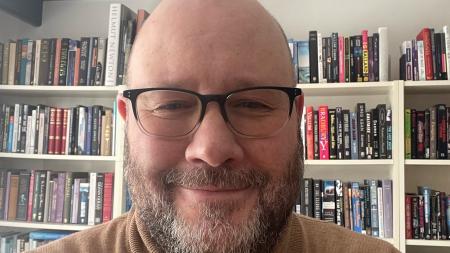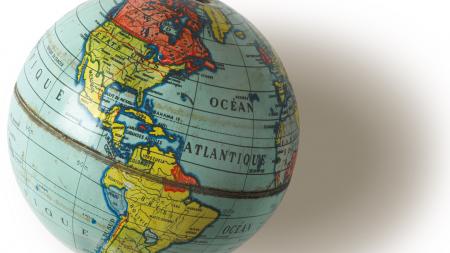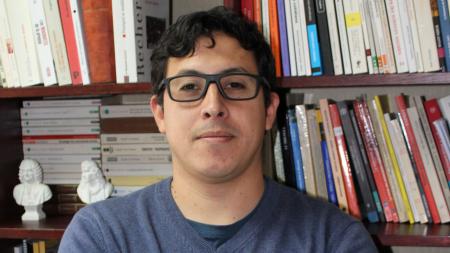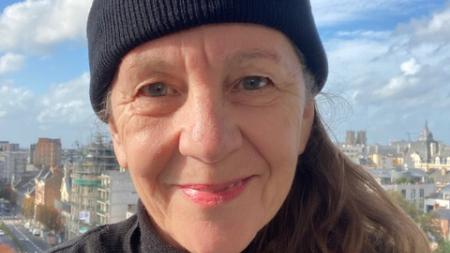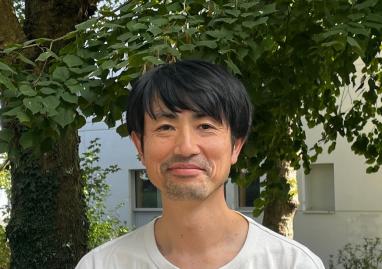
On September 15th, Rennes 2 University welcomed Contemporary Arts Professor Taro Furukata, invited by Anne Zeitz to the EUR CAPS, the research team PTAC and the Visual Arts Department of the Faculty of Arts, Literature and Communication. In addition to being an associate professor at Hiroshima City University, Professor Furukata is also a well-known artist whose work and exhibitions have focused on complex themes such as culture and social identity in the face of important historical political events. Raised in Hiroshima, he received a BFA (1999) and MFA (2001) at Hiroshima City University, before moving to Berlin for 12 years to receive a BFA (2010) from the Weißensee Academy of Art Berlin. Some of his recent exhibitions that have drawn international attention include his solo show The Invisible Commemorative Building, THE POOL, Hiroshima (2022) and Each Day Begins with the Sun Rising, Benton Museum of Art, Claremont (2022).
How did the collaboration with CAPS begin?
Taro Furukata (T.F.): Last year, I had the pleasure of meeting and getting to know Anne Zeitz, an associate professor in the visual arts faculty (arts plastiques) at Rennes 2 and lecturer of the CAPS program, when she came to my university in Hiroshima accompanied by her colleague Hiromi Takahashi-Romanelli. As she is responsible for the international component of the visual arts faculty, she was missioned by the University to visit partner universities with her colleague. She was also advancing a research project concerning sonic practices and Japanese artists she was working on. Although she and I didn’t know each other previously, we both discovered that we share a strong interest in German art influences. She is originally from Berlin and I speak fluent German from my time in Berlin and so we were able to have many interesting exchanges on art. She is a researcher and curator and she had been working with photography, video, and sound media in the past, and those are all elements that I experiment with when creating my art pieces. She told me about the International Chair program that you have at Rennes 2 University and we were able to organize this visit.
Could you please tell us about some of the projects and activities that you have been undertaking since arriving?
T.F.: I’ve been able to exchange and collaborate with lecturers and researchers from the EUR CAPS program as well as faculty of the visual arts and the PTAC research team of Rennes 2. Firstly, I held a presentation for over 40 students and staff members at Rennes 2 centered on the origins of the design of the Hiroshima Peace Memorial Park. The Park, which bears memory to the victims of the atomic bomb, was planned and designed by the Japanese architect Kenzo Tange. He was one of the most important architects of the last century and he combined traditional Japanese styles with modernism. He handled many urban redevelopment projects in the post-war period and he also has buildings on other continents.
I also provided a presentation of my work to a group of doctoral students of the EUR CAPS at Bois Perrin. It was focused specifically on my art pieces from 2021 and we had a discussion on the work of the modernist Charles-Édouard Jeanneret, also known as Le Corbusier. He was a very important architect whose style is very famous in Japan amongst other places.
In addition, I participated in the study day “Ecouter la pluie” organized by Hiromi Takahashi-Romanelli and Anne Zeitz, where I gave a presentation on my art piece “When the East Wind Blows”, a variable-scale installation composed of diverse elements. The work includes a shirt that was worn by Katsutaka Idogawa, the former mayor of the town of Futaba in Japan's Fukushima prefecture, where the nuclear disaster at the Daiichi power plant took place on March 11, 2011. The installation refers to the Japanese poet Sugawara no Michizane (845-903) and one of his famous poems, written in 901, just before his forced departure from Kyoto. In it, Sugawara no Michizane expresses his great sadness at the prospect of never being able to return to Kyoto. This installation superimposes the poet's experience on that of the Fukushima region's inhabitants, who will never be able to return home. To achieve this, I used the installation of shells (Thais clavigera), indicators of contamination collected around the exhibition space, which have been used to dye the sleeve of the shirt.
I understand that you recently undertook an interesting project on an island off the coast of Brittany. Could you tell me about it?
T.F.: Yes, I was amongst a team of associate professors accompanying 20 students from the Master program of the visual arts faculty as well as the EUR CAPS in the framework of the seminar Momoshima/Ponant (directed by Emeline Jaret, Séverine Cauchy, Yann Sérandour and Anne Zeitz) to the island of Groix. It’s located 4 miles from Lorient, and is only 8 km long and 3 km wide. During the trip, which lasted 3 days, we worked with the students to help them produce collective art that centers on insularity and maritime space. I have worked on similar projects in the past involving artists and the inhabitants of an island off the coast of Hiroshima, using local resources. The project really reflected the spirit of a shared expedition, based on the characteristics of this particular island and the ways in which artistic projects have come into being. This seminar explored the forms of such an experience, based on displacement, crossing and isolation.
What are research themes that you’re currently working on?
T.F.: For the last few years, I’ve been working on questions and themes related to the identity of the city of Hiroshima - prior to the atomic bomb, and then in the post-war period. There is a large contrast between the two periods and hence between the two identities, one of war and then of peace. The conflict of identities and the transition from one to the next has greatly influenced me and my work.
